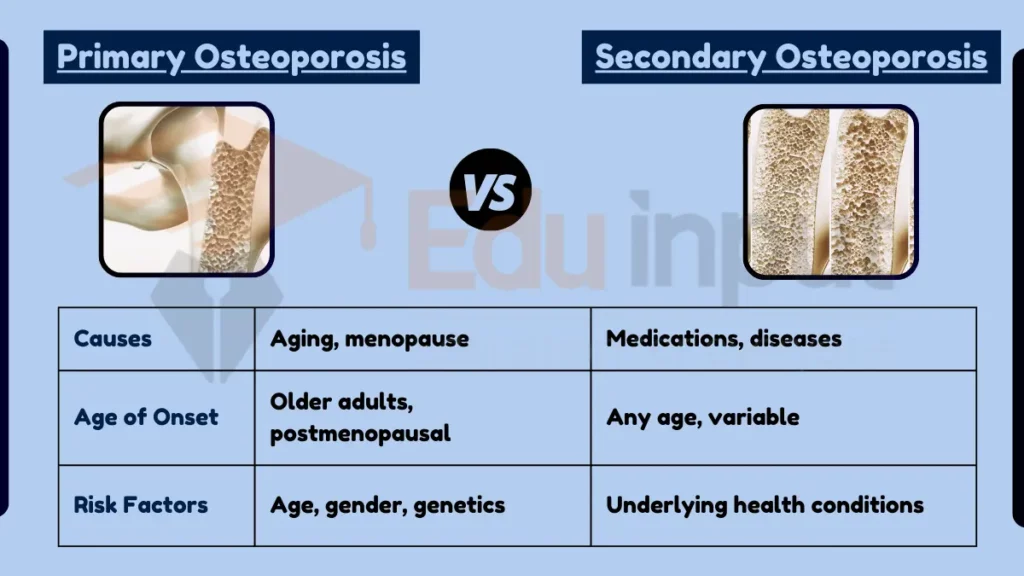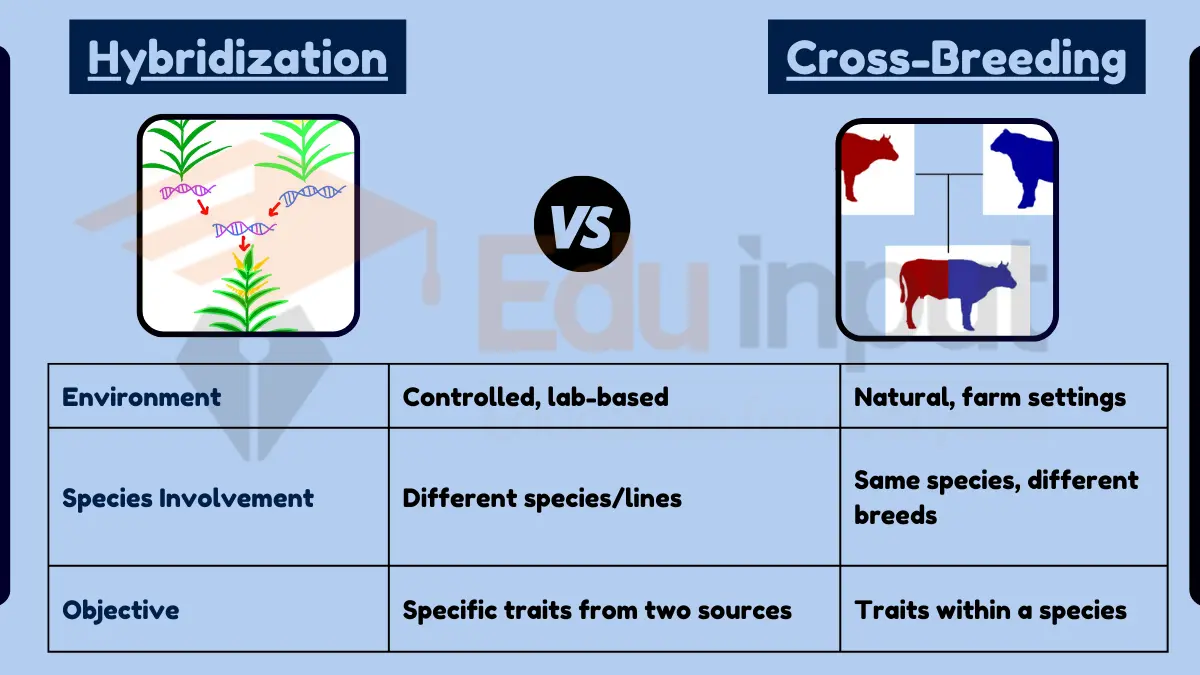Difference Between Primary and Secondary Osteoporosis
December 28, 2023
Table of Contents
Key Difference
Primary and secondary osteoporosis are two types of osteoporosis, a condition characterized by weak and brittle bones, but they differ in their causes and onset. Primary osteoporosis is usually age-related, developing naturally as a result of bone mass loss with aging. It is most common in postmenopausal women and older men. Secondary osteoporosis, however, is caused by external factors or medical conditions, such as long-term medication use (like steroids), chronic diseases, or hormonal imbalances, which affect bone density and strength.

Comparative Analysis
- Causes:
- Primary Osteoporosis: Natural aging process, hormonal changes, especially in menopause.
- Secondary Osteoporosis: External factors like medication, other diseases.
- Age of Onset:
- Primary: Typically in older adults, postmenopausal women.
- Secondary: Can occur at any age, depending on the cause.
- Risk Factors:
- Primary: Age, gender (higher in women), genetics.
- Secondary: Certain medications, chronic illnesses, lifestyle factors.
- Prevention and Management:
- Primary: Diet, exercise, supplements (calcium, vitamin D).
- Secondary: Treating the underlying cause, alongside general bone health strategies.
- Diagnosis:
- Both diagnosed through bone density tests, but secondary osteoporosis requires identifying underlying causes.
Table Summary
| Feature | Primary Osteoporosis | Secondary Osteoporosis |
|---|---|---|
| Causes | Aging, menopause | Medications, diseases |
| Age of Onset | Older adults, postmenopausal | Any age, variable |
| Risk Factors | Age, gender, genetics | Underlying health conditions |
| Prevention/Management | Lifestyle changes, supplements | Address underlying cause |
| Diagnosis | Bone density tests | Bone density + identifying causes |
Also Read:
File Under:







Leave a Reply